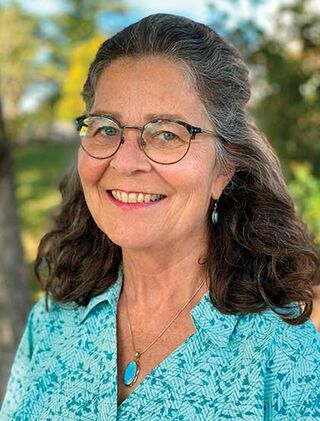Resilience
What We Can Learn From the Body to Seek Communal Restoration
How the body's resilience can help us seek communal growth and flourishing.
Posted May 27, 2021 Reviewed by Davia Sills
Key points
- An upcoming book uses the metaphor of healing physical wounds to show how individuals and communities can heal spiritually.
- Clotting, inflammation, building new tissue, and scar formation all have their parallels in how people cope with emotional trauma.
- Learning these lessons from our physical bodies can help us develop resiliency and flourish together.
Our bodies are complex and intimately made, vulnerable to wounds but innately able to bring healing and restoration. In this interview, Jennie McLaurin talks about lessons we can learn from the resiliency of the human body in the face of trauma and hardship on the path to individual and communal flourishing.

Jennie McLaurin, M.D., MPH, M.A., is a pediatrician, writer, and public health expert with interests in culture, bioethics, and theology. She has worked with marginalized communities in the U.S. for over 30 years, caring for migrant, homeless, indigenous, and special needs populations. Her work has taken her to all 50 states, several territories, and a number of countries.
Jennie describes herself as a wonderer and wanderer, interested in the relationship of the spiritual to the everyday. She finds herself most fully known in a Trinitarian Christian expression but welcomes the wisdom and friendship of all who journey in faith. Jennie’s first book, Designed to Heal: What the Body Shows Us about Healing Wounds, Repairing Relationships, and Restoring Community, is scheduled for release in August 2021.
Jamie Aten: Why did you set out to write your book?
Jennie McLaurin: My co-author, Dr. Culiat, is a molecular geneticist. I hired her for a Templeton Foundation grant I led to help pastors appreciate the field of science as a supportive aspect of faith. She gave a talk on the intricacy and beauty of wound healing, intending to show the audience an awe-inspiring world that exists on a microcellular level. She emphasized the order, precision, adaptability, and diversity of the process. She also shared distinct ways the system could go awry—too much inflammation causes ulcers and tissue death; too much scarring causes contractures; something called “proud flesh” causes a messy overgrowth of useless tissue.
Afterward, we talked about all the parallels we saw in how the body naturally is designed to heal and how we promote or disrupt healing in our gathered bodies—our corporate worlds. This parallel shows how we can use the image of wound healing as a way forward in what seems to be a culture of relentless division and chronic wounding. The images found life in many of my patient stories, and further research on communal trauma supported the concepts we learned from the body. So—we decided to write about it and were strongly encouraged along the way by a number of authors.
JA: What is the primary takeaway you hope readers will learn from reading your book?
JM: The human body has an extraordinary innate power to heal from wounds due to a coordinated, collaborative series of responses that promote new growth and restored function. Our corporate bodies—churches or faith groups, families, communities—can use this image of healing to promote a vision of life together that is fundamentally oriented toward human flourishing rather than stuck in cycles of woundedness and division.
JA: What are some lessons from your book that can help people live more resiliently?
JM: The human body is a spectacular example of how life is designed to encounter challenges and to flourish beyond injury. The body is so adaptively resilient at every stage of development! It is poised to anticipate wounds and to orient toward healing within seconds of injury.
But complete healing does take time and requires patience and community. The body doesn’t wallow in its pain unless it is malfunctioning. It promotes restoration, and it allows the help of very diverse characters. Each component of the body’s healing team knows its part to play, gets in and gets out when needed, and adapts to the local situation.
I think we need to have a mindset that acknowledges our traumas, but that doesn’t expect them to define who we are. We are meant to heal our divisions. We can orient ourselves and our communities toward restoration if we are willing to model ourselves after the body—stop the bleeding, supply just the right amount of inflammation to right the wrong, knit together with a diverse array of helpers, accept that some scarring is inevitable, but it helps restore function, and keep working for a transformation where the ultimate shape is adapted perfectly to the current need of the whole.
JA: What are some insights from your book that can help readers support a friend or loved one?
JM: The body has four phases of wound healing. The first response is a clot—stop the bleeding! Come together, stick close, apply pressure. This is not a time for advice but for a hug. No discourses needed.
The second stage is inflammation—the body needs its helpers to clear debris, keep the site clean, and apply some heat and pressure to protect the wound as it readies for the next step. We need healthy inflammation—an acknowledgment of wrongs, organized responses, elimination of issues that distract or distort. But chronic inflammation kills, and chronic outrage in society doesn’t promote healing.
The third phase is building new tissue, and that means we allow others in to shape our wound closure. Tissue building uses a lot of diverse members of the body—who might be helpful to mend our gaps with each other? How can we draw on a wider array of people, even “outsiders,” to assist us?
Finally, we have scar formation or, sometimes, regeneration. Scars allow us to go on with life; they are signs of resilience. Scars require tension to properly align with the rest of the body—where do we need to allow some tension so we can better move forward? Regeneration is “scarless” but rare. What would regeneration look like in our community?
JA: What are you working on these days?
JM: I just donated a kidney to a friend, so I am experiencing wound healing in living color! It has been an experience that again shows the power of community in promoting full healing. And I am freshly struck with how my body knows what to do to resolve all these incisions!
In terms of writing, I am drawn to the power of hope as an ethic in our corporate life as well as in the medical world. We hear so much about privacy and autonomy, but we are not meant to navigate the world mostly as individuals. Autonomy has a lot to do with control and power, while hope is connected to love, community, and possibility.
I am also examining the idea of the Christian Trinity as a metaphor for a life that is fully authentic as a unique person but also fully entwined in an indivisible community. The idea of the Trinity can give us some practical ways of seeing ourselves as relational persons in our world. It also speaks of the coherence of all things as both one and many, the remote effects of one organism on another, and ongoing findings in astrophysics. I want to better understand this idea.
Lastly, I have so many stories from my work and my life. I’m trying to discern how best to tell them. Often, I use my blog to examine pieces of these.
JA: Anything else you would like to share?
JM: As it happens, I have been drawn to the word resilience since I was about 11 years old. I delivered newspapers and always read the front page. There was a story for several months about an abused child who lived in multiple foster homes only to be returned to his biological parents and land in a coma. He later died, but I remember reading about resilience and risk in light of the foster care system.
I was struggling with how I perceived myself in my own family and how I might be successful in life. I actually made a decision to be resilient! I studied whatever I could in the days before the internet and determined that risk factors would not define my outcomes.
This theme carried me for years. I try to imbue hope in my marginalized patients by showing them places of resilience. One of the characters in my book has a tattoo of the word resilient.




